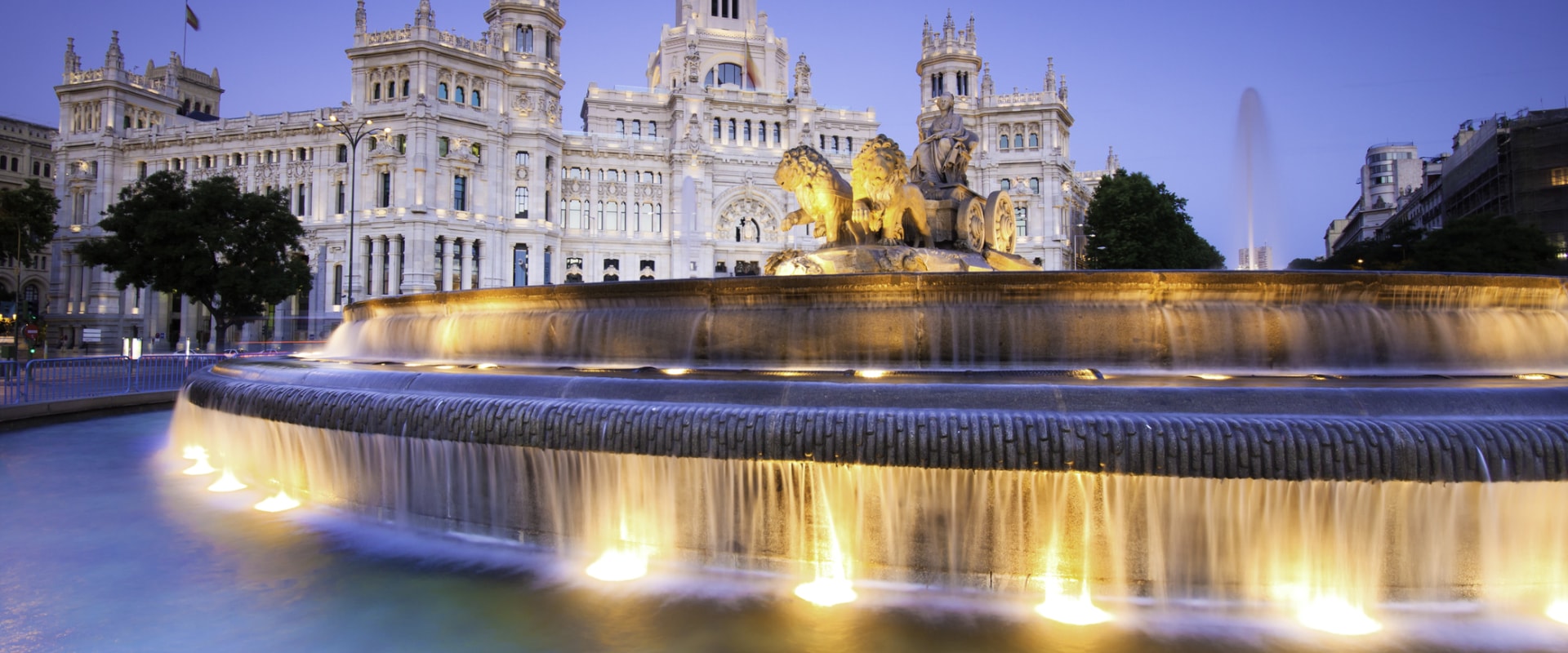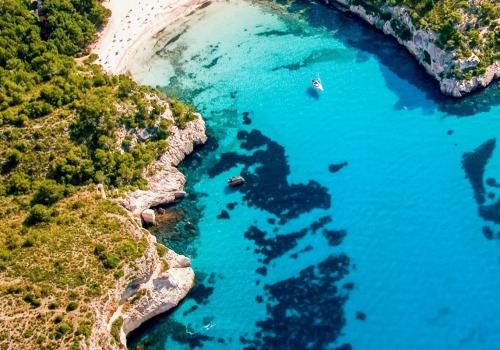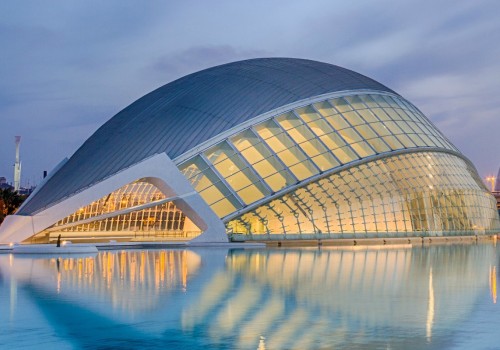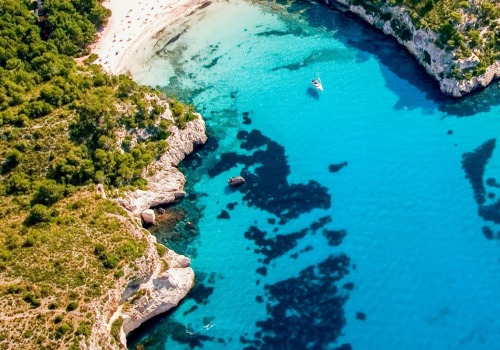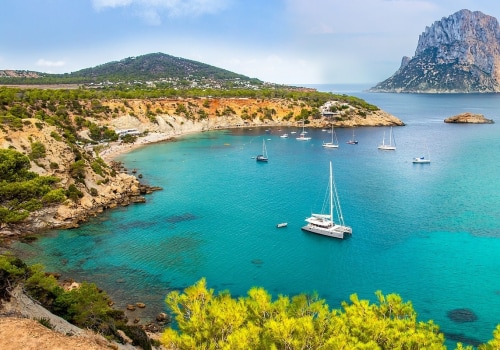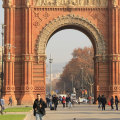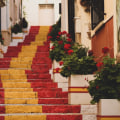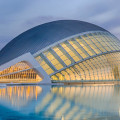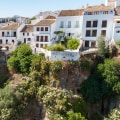Prado National Museum · 2.Buen Retiro Park and Crystal Palace · 3.Royal Palace and Gardens · 4.Stroll through Plaza Mayor · 5.The world-class Prado Museum displays countless masterpieces created during Spain's Golden Age, and the 18th century Royal Palace rivals the Château de Versailles in France. The Prado Museum exhibits around 2,300 pieces from the collection in more than 100 rooms spread over three floors. Trying to see it all in one visit can be overwhelming, but it's possible to focus on a specific itinerary of masterpieces. El Prado suggests routes (self-guided tours) of specific works.
Part of the exhibition space of the Prado Museum includes a contemporary building and the renovated 16th-century cloister of the monastery of San Jerónimo el Real. These galleries showcase a remarkable collection of 17th century Spanish religious paintings. About a 10-minute walk from the Royal Botanical Garden is the popular TriCiclo Restaurant (28 Calle Santa Maria), which serves lunch and dinner in a contemporary dining room with a casual atmosphere. The restaurant specializes in international cuisine, prepared with seasonal market ingredients with a gastronomic twist.
The Buen Retiro Park is an oasis of peace in the heart of Madrid. This lush, well-kept park offers an escape from the hustle and bustle of the city. The park covers more than 125 hectares and is shaded by more than 15,000 trees. Created for the Count-Duke of Olivares in the 17th century, the historic park has an elegant atmosphere with its variety of gardens and tree-lined paths.
El Retiro Park was owned by the Spanish royal family until the 19th century; since then it has been a public park. Built in 1887, the Palacio de Cristal is a splendid cast-iron and glass pavilion that presents contemporary art exhibitions. The Crystal Palace overlooks an elegant fountain and a reflecting pool. Visitors will find other interesting sources in the Buen Retiro Park, such as Los Galapagos (The Turtles), The Fallen Angel (The Fallen Angel) and La Alcachofa (The Artichoke).
The palace was commissioned by Philip V in the 18th century. The majestic neoclassical façade is made entirely of granite and white stone from Colmenar. The Ionic columns and Doric pilasters on the façade are based on drawings that sculptor Bernini originally designed for the Louvre in Paris. The balustrade features statues of Spanish kings.
Visitors must save time to explore the Campo del Moro Gardens. These charming historic gardens were created during the reign of Philip II and are designed in a formal French style with fountains and avenues. The 20-hectare green space offers a haven of tranquility in the center of Madrid. It is a wonderful place to relax and take scenic walks.
This elegant 17th century square was built during the reign of Philip III and was used as a center of commerce and municipal life, as well as the setting for ceremonial events such as the proclamation of a new king and the canonization of saints. The square also served as the venue for bullfights, dramatic performances and gentlemen's tournaments. The Plaza Mayor took its current appearance after a fire in 1790, when the corners were closed and the nine entrance arches were built, linking it to Toledo Street, Mayor Street, Postas Street and others. The Puerta del Sol has been the scene of many historical events, including the Spanish resistance to Napoleon on May 2, 1808, and in 1931, the Second Republic was proclaimed here.
The area around Puerta del Sol is full of restaurants and shops. For tourists looking for special gifts to take home, La Violeta (6 Plaza de Canalejas) is the ideal place. The store is just a few steps from Puerta del Sol. Founded in 1915, this family boutique offers Madrid's specialty of violet candies, as well as chocolate chocolates and other old-fashioned sweets.
Inaugurated by Queen Sofia in 1986, the Museo Nacional Centro de Arte Reina Sofía is the avant-garde centre of contemporary art in Madrid. The elegant and modern building was created by architect Antonio Fernández Alba and has features reminiscent of the Pompidou Centre in Paris, especially the three glass towers that house the elevators outside the building. The Reina Sofia Museum contains more than 23,000 works of art in its collections. In its meticulous representation of modern and contemporary Spanish art, the collection includes notable masterpieces such as works by Joan Miró, Pablo Picasso, Salvador Dalí and Alexander Calder.
The works of art are exhibited in several rooms spread over a vast exhibition space of 39,000 square meters. Located at an important traffic junction, the Fuente de Cibeles is one of the most emblematic monuments in Madrid. Realistic statues depict the Roman goddess Cibeles riding a chariot pulled by lions. The fountain was created in 1782 by Francisco Gutiérrez and Roberto Michel with the original purpose of providing water for public use.
The temple was built for King Adikhalamani in the second century BC, and was dedicated to the Egyptian God and goddess, Amon and Isis. Inside the temple are well-preserved original decorations, which is rare in an archaeological site. The small chapel from the 18th century, along the banks of the Manzanares River behind the Royal Palace, hosts an annual festival in honor of San Antonio de Padua on June 13, but it is the interior that has become a place of pilgrimage for art lovers. The Thyssen-Bornemisza Museum presents an overview of European art from the 17th century to the end of the 20th century.
With nearly 1,000 paintings on display, the collection covers medieval religious art, portraits from the Renaissance era and biblical subjects, the Baroque period, Rococo, Romanticism, Impressionism, Fauvism, Expressionism, Modern Art and Pop Art. The museum also has an excellent collection of 19th century American paintings. The Basilica of San Francisco el Grande was built by Charles III in 1761 for a Franciscan convent. The church was designed by Francisco Cabezas, who modeled the neoclassical architectural plan in the church of Santa Maria in Campitelli in Rome.
Construction was completed in 1784 by Francisco Sabatini. The interior features an inspiring 58-metre-high dome that is larger than the dome of St Paul's Cathedral in London. Magnificent paintings adorn the chapels of the basilica, including masterpieces by the Old Spanish Masters. This charming museum is dedicated to the work of Joaquín Sorolla y Bastida, the most famous Spanish impressionist painter.
More than 1,200 paintings and drawings by Sorolla are exhibited in the artist's house and studio, which has preserved its original decoration. The extensive collection includes a wide representation of Sorolla's works. The National Archaeological Museum (National Archaeological Museum) was founded by Queen Elizabeth II in 1867 and has a rich collection of artifacts from prehistoric times to the 19th century. Exhibits include archaeological finds, ethnography, decorative arts from antiquity and ancient coins.
The Lázaro Galdiano Museum exhibits the exceptional private collection of the 19th century financier Lázaro Galdiano, housed in the mansion of Parque Florido, where he lived. The museum has an extensive collection of around 9,000 works of art exhibited in 30 rooms. From armor, coins and medals to jewelry, baroque glass and tapestries, the collection is extremely diverse. Be sure to see Spanish paintings from the 16th to 17th centuries by famous ancient masters, such as El Greco, Goya, Velázquez, Zurbarán, Ribera, Pereda and Murillo.
At almost 30 meters high, the elegant granite entrance door makes a great impression. The facade is adorned with sculptures, capitals and decorative reliefs. The National Museum of Romanticism presents a unique collection on the theme of romanticism, the artistic and intellectual movement of the early 19th century. The museum occupies the Palace of the Marqués de Matallana, which dates back to 1776 and features wonderful decoration and furniture from the 19th century.
The eclectic collection includes jewelry, ceramics, furniture and porcelain dolls. A highlight of the museum, the assortment of 19th century paintings stands out for its exceptional quality, thanks to works by masters such as Goya. The museum also has a splendid magnolia garden, landscaped in the formal 18th century French style with avenues, a fountain and flower beds. A café in the garden serves coffee and pastries to museum guests in need of refreshments.
Just a 10-minute walk from the Museum of Contemporary Art is Madrid's largest shopping mall, El Corte Inglés, which sells everything from clothing, shoes and swimwear to traditional Spanish fans. One of the most recognizable structures in Madrid, the spectacular Puerta de Alcalá, dates back to the late 18th century. Unimpressed by the gate of the city that received him, King Charles III created one that would do justice to the city. A vast public park next to the Manzanares River, Madrid Rio Park is a beautiful green space with a variety of flora and fauna.
It is a popular gathering place for city residents, especially families, thanks to the park's 17 play areas. One of the best museums in Madrid is the National Archaeological Museum. The museum houses a wide collection of artifacts, art and collections that explore life in the Mediterranean from ancient history to the 19th century. Although the street now seems integral to the bustling capital, it's actually a fairly recent addition to the city.
Completed in 1910, Gran Vía is packed with hundreds of shops, restaurants and businesses. Known as the Buen Retiro Park or El Retiro Park, the park is a 350-acre extension of gardens, fountains and buildings located just outside the city center. El Retiro Park began as a monastery in the 16th century. However, with more than 7,000 works of art representing culture and history from the 12th century to the beginning of the 19th century, it is impossible to see it all in one visit.
Visitors can focus on the museum's collection of Spanish artists, including Goya, El Greco, da Ribera and Velázquez, which is arguably the best collection of Spanish paintings in the world. Plaza Mayor, the most famous of the many stately squares in Madrid, dates back to 1619, when it was outside the city limits and was used to host bullfights. The apparently gravity-defying KIO towers in Madrid's Financial District tilt at a 15-degree angle and were the first sloping skyscrapers in the world. Residence of the Spanish monarchy from Charles III to Alfonso XIII, this building now functions as a museum where you can learn about the brilliance and luxury of the Spanish royal elite.
The architecture was inspired by the sketches made by Bernini to build the Louvre in Paris, and although Filippo Juvarra began working on the plans, it was his protégé Juan Bautista Sachetti who finally finished the formidable work. The decoration within the 3,000 rooms was modified with each change of power to suit the specific tastes of each monarch. Our highlights include the main staircase of Sabatini, the Throne Room, the Royal Chapel and the Royal Apothecary. This 118-hectare park dates back to the construction of the Jerónimos Monastery by order of the Catholic Monarchs.
It is one of the most used green spaces by locals in their free time. Not only does the park have extensive gardens and well-kept trees, but you can also see the remaining monuments from previous centuries, including that of Alfonso XII, a colonnade by José Grases Riera overlooking the pond; the Casón del Buen Retiro, once majestic ballroom that is now part of the Prado Museum; and the Palacio de Cristal, built in 1887 for the Philippine Exposition. The gardens of El Retiro are even more beautiful, such as a rose garden, the Casa de Vacas cultural center and numerous fountains and statues, among which is the famous sculpture 'Angel Caído' ('The Fallen Angel'). Puerta del Sol, or Puerta del Sol, as it is known locally, is located right in the center of Madrid.
Called (as expected) by the sunlight shining in the area, Puerta del Sol began as a wide junction where small merchants settled down to do business with those who came and went in the center of the city. Now, the most important building is the Casa de Correos, the seat of the government of the Community of Madrid. The square also houses one of the most famous statues in the city, “The Bear and the Strawberry Tree”, which is 4 meters high, weighs 20 tons and, of course, is always surrounded by tourists. Madrid is a city so full of life and culture that it is difficult to do it justice in a few paragraphs.
Artistically, the city stands firm against any other in Europe, with one of the best art museums on the continent, where masterpieces of the Renaissance and fundamental pieces of the 20th century await you to captivate you. So any fan of the game should consider a pilgrimage to its gigantic 85,000 seat stadium, where history has been made many times over the seasons. The best of these Iberian treasures and sculptures seem almost new, despite being at least 2,500 years old. Much later, but no less impressive, is the Treasury of Guarrazar, a Visigoth ensemble of crosses and votive crowns dating back to the 600s.
Another “must-see” in Madrid, Plaza Mayor is a beautiful Renaissance square, built at the beginning of the 17th century and completely isolated by historic three-story high residential buildings. After that, you could stroll to the 400-year-old bronze statue of King Philip III, who was in power at the height of the Spanish empire. It is the largest municipal market in Europe with 200 stalls. This is when about 3,500 stalls are open, selling pretty much anything you can think of, whether used or new.
The best reason to come is the numerous works by 20th century artists Picasso and Dalí. These are special salons that emerged in the 1960s, and here you see a show about a candlelight meal with sangria. Spain's sunny summers make it a magnet for travelers looking for a relaxing and relaxing holiday, but the country's capital and largest city is no place to relax. This great neoclassical triumphal arch was commissioned by King Charles III to celebrate the arrival of the monarchs in the capital of Spain.
A favorite spot for tourists and locals alike, the park has a large artificial pond where people can rent kayaks and canoes. It is less of a market for fresh products (although there are grocery stalls) and more of a gastronomic destination to buy the best that Spain has to offer, such as cava, paprika (parprika) and saffron. With its creative Nouvel building and the attractive Sabatini building, travelers flock to this art museum to witness Guernica, which turns out to be the best of Picasso's masterpieces. We have left at the end of this list Segovia and Toledo, 2 of the best preserved medieval cities in the world and, in both cases, former capitals of Spain.
The official residence of Spain's royal family is today used only for official ceremonies (King Felipe and Queen Letizia live in the more modest Palacio de la Zarzuela, just outside Madrid). Due to this delay due to political factors, it is in fact one of the most notable milestones in Spain. It is located next to the town hall building (formerly the headquarters of the Spanish post office) and in front of the Banco de España building. It houses the legendary and remarkable Cibeles Fountain and the extraordinary Cibeles Palace, Plaza de Cibeles is one of the most emblematic monuments in Spain.
Whether you're exploring Madrid's world-class art museums, contemplating architectural wonders while sipping a latte at a sidewalk café, or having fun all night in tapas bars along Gran Vía, Madrid's many tourist attractions are simply too captivating to miss. From streets to monuments, from fine art to intrinsic architecture, and from gastronomic festivals to flamenco fashion, there is no place on earth that feels as young and passionate as Madrid, in Spain. The capital of Spain, Madrid, has an impressive array of historical monuments and art museums, as well as pleasant gardens and public squares. .
.
